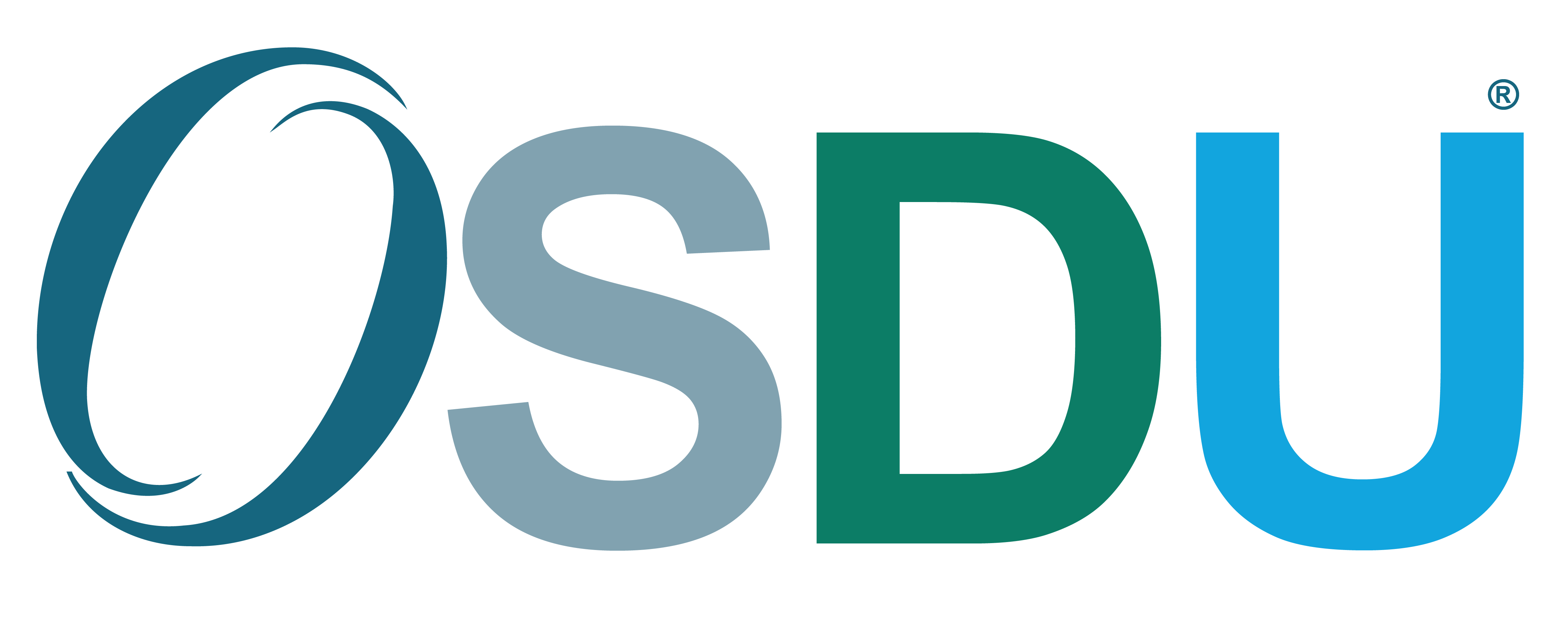PETRONAS’ OSDU® Journey from inception to realising tangible value
PETRONAS’ adoption of the OSDU Data Platform marks a significant milestone in our digital transformation journey. By optimising data management, enhancing governance, and leveraging cutting-edge technologies, we continue to mature in our journey towards being a digitally enabled organization.
Digital transformation is no longer a choice within upstream oil and gas but a strategic imperative. Circa 2020 PETRONAS, a global energy player, acknowledged this criticality and embarked on a transformative journey. At its core was the transformation of exploration and production (E&P) data management, deemed as a critical enabler for legacy and future digital technologies, including artificial intelligence (AI) and machine learning (ML).
Dive in as we explore PETRONAS’ OSDU journey and the intersection of innovation, collaboration, and digital excellence.
Fuelling Progress: PETRONAS’ Data Management Transformation
As the renowned data scientist Hilary Mason aptly puts it: “The core advantage of data is that it tells you something about the world that you didn’t know before.” This resonates for E&P companies seeking to extract meaningful insights from their data haystacks. Conventional on-premise data storage solutions, often sourced from various vendors, establish isolated silos that impede the adoption of cutting-edge technologies such as AI and ML.
Managing voluminous data generated from measurement, interpretation, and modelling poses great challenges. We acknowledged the necessity to revamp our data management strategy to optimises the data supply chain for faster and better business decisions.
In pursuit of sustainable data-driven solutions and achieving transformative progress, PETRONAS is guided by four strategic goals:
- End-to-End Visibility: transparency across the E&P value chain, breaking down silos, and enabling informed decision-making
- Safety and Efficiency: leveraging historical and real-time data for effective action and timely intervention
- Workforce Productivity: using digital tools to automate tasks, allowing teams to focus on creative and high-value output
- Customer Experience: addressing frictions with innovative solutions to enhance satisfaction and increase customer return rates
Strategic Decisions: Choosing Readily Available OSDU Data Platform
Our motivation wasn’t driven by technology, it was about strategic positioning. Rapid adoption of data and cloud technologies was imperative with the failure of embracing these advancements posing risks to the viability of our investments.
Consolidating our diverse corporate data stores was identified as an imminent need, and we were focused on cloud-native solutions that promised scalability and flexibility. This steered PETRONAS to choose from readily available OSDU Software-as-a-Service (SaaS) offerings within the market. An OSDU implementation partner with strong E&P domain background was also identified to streamline our path towards value realisation with a solution that balanced risk and cost-effectiveness.
These strategic decisions would allow us to efficiently access and utilise consolidated, liberated data at scale, contributing positively to the evolving landscape of a data-driven E&P business.
OSDU Adoption: Pragmatism, Efficiency, and Beyond
The initial step in PETRONAS’ OSDU implementation focused on the need for data consolidation and was guided by the tactical decision of utilising OSDU default robust ‘released’ features. Adopting what was readily available allowed us to seamlessly merge multiple corporate data stores, into, the envisioned unified OSDU Data Platform. It is the definitive source of truth for PETRONAS’ E&P data – coined internally as the ‘golden E&P record’.
With this decision, we were prepared to face situations when our data types are beyond the scope of the OSDU Data Platform default capabilities. To address any gaps, we expanded on the work of the OSDU schemas to enrich our adoption of the OSDU Data Platform. This underscored our dedication to a streamlined data ecosystem which ensured the integrity of our distinctive E&P data remained intact.
The OSDU Data Platform adoption was anchored on prioritisation, efficiency and elasticity in making available a unified data ecosystem where multiple domains coexisted. Key phases of the implementation included:
- Assessment and Planning: We conducted thorough initial assessments, peeling back the layers of our existing data landscape. Our approach defined a robust migration strategy aligned with our E&P goals.
- Technology Implementation: The canvas for our transformation was the cloud infrastructure. We orchestrated the setup of essential tools laying the groundwork for seamless data migration.
- Data Migration: A myriad of data types across domains encompassing amongst others – wells, petrophysics, core analysis, seismic, and geospatial were prioritised and migrated.
Remarkably, more than half of our corporate data stores found a new home on PETRONAS’ OSDU Data Platform. We realised cloud adoption and liberated terabytes of E&P data. Navigating through this transition, a viable path was established moving us closer to our envisioned data-driven E&P business.
Value-Centric Data Governance: PETRONAS with OSDU Adoption
PETRONAS embraced the OSDU implementation with these value realisations in mind:
- Cost Efficiency and Data Management: The financial goal of at least 10% reduction in Total Cost of Ownership (TCO) was achieved by decommissioning of siloed data stores. Beyond financial goals, digital readiness, resource optimisation for informed decision-making, and operational efficiency were a few of the data management value levers realised. We are now better positioned to unlock additional value with our data management practices.
- Enhancing Customer Experience: Real-time insights enable personalised interactions, predictive recommendations and proactive problem-solving. Users gain seamless access to a holistic view of their E&P data. Data trust has deepened as users witness their data being enriched and handled responsibly and securely. Our commitment to data excellence elevated the customer journey by eliminating low-value work spent laboriously searching for data.
- Data Governance and Security: Robust data governance and security are non-negotiable. By adhering to industry standards and best practices, PETRONAS was able to enhance its data security and fostered greater trust with its users. We seamlessly integrated business rules and data security classifications into our PETRONAS OSDU Data Platform. This ensured that all data regardless of its origin or type, would be managed and protected meeting industry standards.
It’s Not the Destination, It’s The Journey: External and Internal Initiatives
In the spirit of enhancing OSDU platform’s capabilities, PETRONAS in collaboration with SLB contributed towards the Production DDMS Historian. Domain Data Management Service (DDMS) facilitates business data access to the relevant applications and processes in an optimised manner. PETRONAS’ joint contribution entailed data model development to handle data types that covers management of O&G production data such as reporting entity, production volume, downtime information, well test summary, etc.
PETRONAS continues to strive and expand its domain coverage by internally adopting OSDU services and capabilities includes External Data Services (EDS), Rock and Fluid Sample (RAFS) DDMS, and Wells Delivery DDMS. We are driven to expand this coverage in ensuring comprehensive data management across all aspects of our E&P business.
By connecting to a wider array of technical applications and workflows, the internal adoption of PETRONAS OSDU Data Platform will aim for a steady user base expansion. This aspiration will enrich our data and leverage the robust capabilities inherent in the OSDU ecosystem.
The journey of digital transformation for PETRONAS is ongoing and there is still much to be done to deliver high-quality insights across our E&P Value Chain. We look forward to seeing our contributions to the OSDU Forum help drive pace and cross-functional synergy that will benefit the whole energy industry.
Author Bio

M Nasri Jamaluddin is the General Manager of Enterprise Architecture, Upstream Technology, Digital & Innovation. He steers and sponsors the overarching Upstream architecture strategy, translating the Upstream vision and strategic objectives to facilitate digital transformation. Furthermore, he governs and assures compliance to adopted standards and best practices within the architecture functions. His leadership also extends to Upstream architecture continuous improvement and sustainability for the entire Upstream value chain.
Leading up to his appointment, Nasri was the Head of Digital Program, Upstream Digital after heading Digital Ecosystem, Upstream Digital and Integrated Operations Strategy, Operational Excellence. Since joining PETRONAS in 2005, Nasri has assumed various roles which includes Maintenance Support, Business Planning, Offshore Operations, Terminal Operations, Operation Performance Improvement as well as Production Surveillance. He was also an Analyst at the Office of the President.
During his tenure in Integrated Operations and Upstream Digital, he has successfully led several digital projects at scale such as Digital Fields (DF) to drive asset digital maturity & discover new oil from old data; and Exploration Cloud Enablement and LiveFDP for faster monetization of resources with increased accuracy and reduced uncertainty. He was also instrumental in the liberation, interoperability and economics of managing E&P data through the adoption of the industry backed OSDU Data Platform; whilst lowering barrier for digitalization of aging facilities leveraging edge analytics & IIOT. He is currently addressing integration of workflows and digital ecosystems across the Upstream value chain, as well as supporting sustainability agenda focusing on greenhouse gases (GHG) reduction and carbon capture and storage (CCS) through data contextualisation and digital twin.

